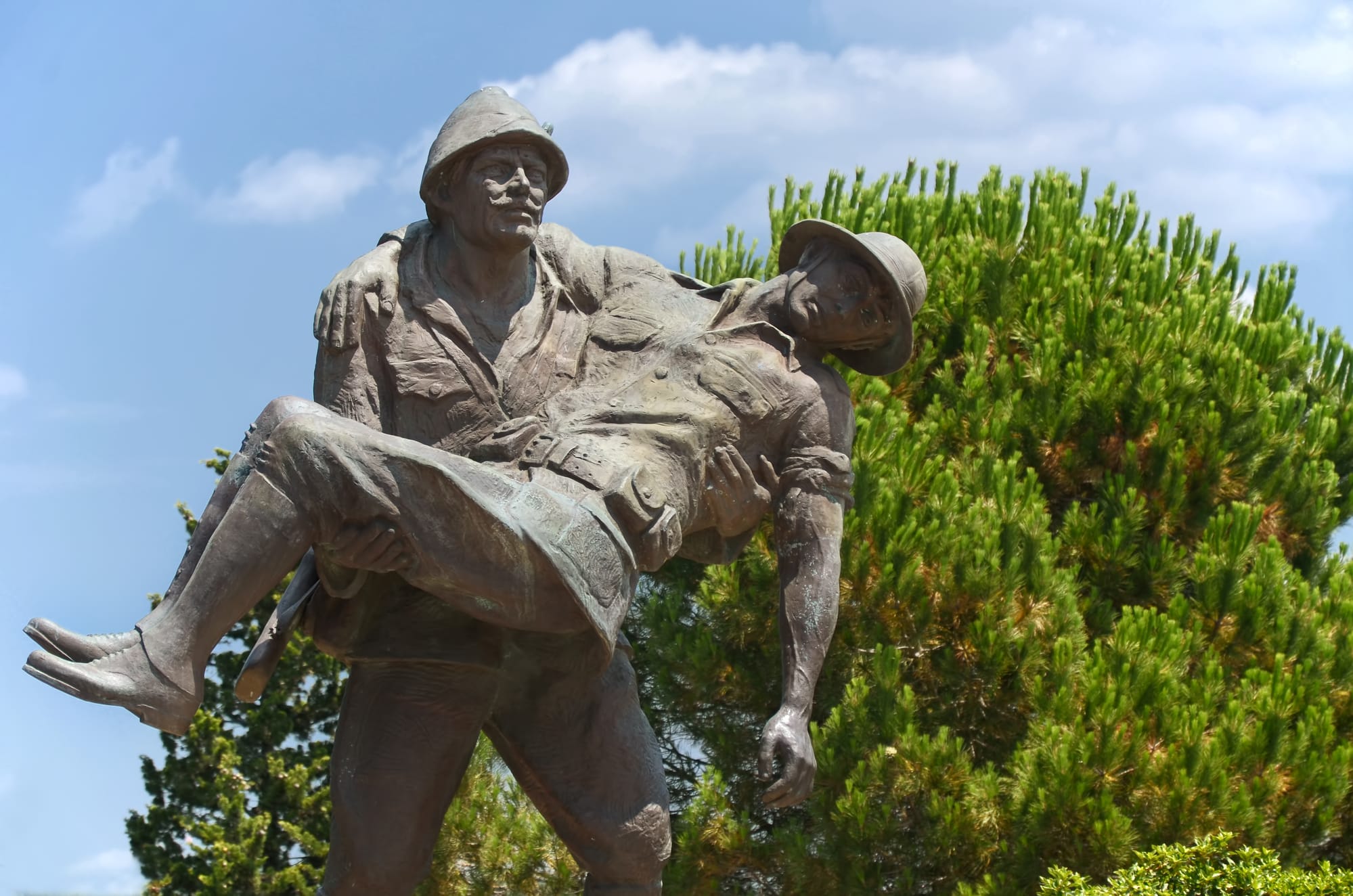Located in Belgium, Waterloo is a symbolic place marking the outcome of a war between French forces and the Anglo-Prussian coalition in 1815. The memory of this conflict ending the reign of Napoleon I is faithfully maintained at the grounds of the Battle of Waterloo, offering a striking insight into the conditions of the war ►
Located in Belgium, Waterloo is a symbolic place marking the outcome of a war between French forces and the Anglo-Prussian coalition in 1815. The memory of this conflict ending the reign of Napoleon I is faithfully maintained at the grounds of the Battle of Waterloo, offering a striking insight into the conditions of the war and its history through its museum. At the heart of this site is the Mound of the Lion, erected in 1926 by William I to honor his wounded son during this confrontation. At its feet stands a building called "The Panorama." He displays a gigantic painting by Louis Dumoulin, plunging you into the bowels of war. The Hougoumont farm, a central strategic point of the battle, contains audiovisual equipment, inviting you to an immersive cinematic experience. In addition, you will attend demonstrations of weapons handling, medical techniques used under the Empire and presentations of cannons, reminding you of the military context of the time.
Gallipoli Campaign fought in 1915 on the Gallipoli peninsula between the Allies and Ottoman forces, was a turning point in Turkish history. On the west bank stands the imposing Kilitbahir Castle, a fortress used as an observation post to maintain control over the strait. Today, it houses a museum displaying remnants of war and offering stunning views of the surrounding area. At the peninsula's tip is the Çanakkale Martyrs Memorial, a spectacular monument to the 253,000 Turkish soldiers who participated in the battle. Anzac Bay, heading north, is also an essential emblem of the war. Embodying the place of the Allies' landing, it is home to many military cemeteries, such as the Beach Cemetery.
The iconic Battle of Stalingrad, which pitted Russia against Germany in 1942, is one of the significant events of the Second World War. Head to Mamayev Kurgan, located in Volgograd, southwest Russia, to immerse yourself in the heart of history. There you can contemplate the statue of the Motherland, built in tribute to the Russian victory, and a military cemetery nearby. Not far away is the Stalingrad Panoramic Museum, with its impressive 16-meter-high painting, immersing you in what this war was like through military relics and war artifacts.
Known as the June 6, 1944 landings, the Battle of Normandy symbolizes the liberation of German-occupied Western Europe. The Arromanches landing museum, with interactive exhibitions organized around models and short films, shows the capital importance given to its port. Also, walk in the footsteps of soldiers on the beaches of Normandy, including those of Utah or Omaha. Not far from the latter is the American cemetery of Colleville-sur-Mer, famous throughout the country. The Pointe du Hoc is also a place not to be missed to discover the ravages of war through the presence of craters caused by the bombings.
The Battle of Dien Bien Phu, which took place in 1954 against French forces, occupies an important place in the history of Vietnam. The Museum of Historic Victory, located in Muong Thanh District, offers you the immense privilege of fully immersing yourself in the heart of war. Its architecture evokes a hat topped with a camouflage net, adding a bold visual dimension. Then, Hill A1, embodying one of the main locations of the battle, still features trenches and bunkers, revealing the actual conditions in which the soldiers lived. Similarly, the cemetery of Dien Bien Phu, where French and Vietnamese soldiers are buried, bears poignant witness to the sacrifice of all.
◄
